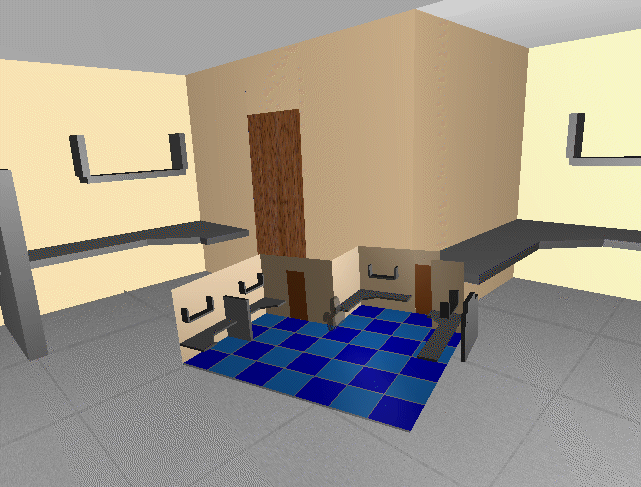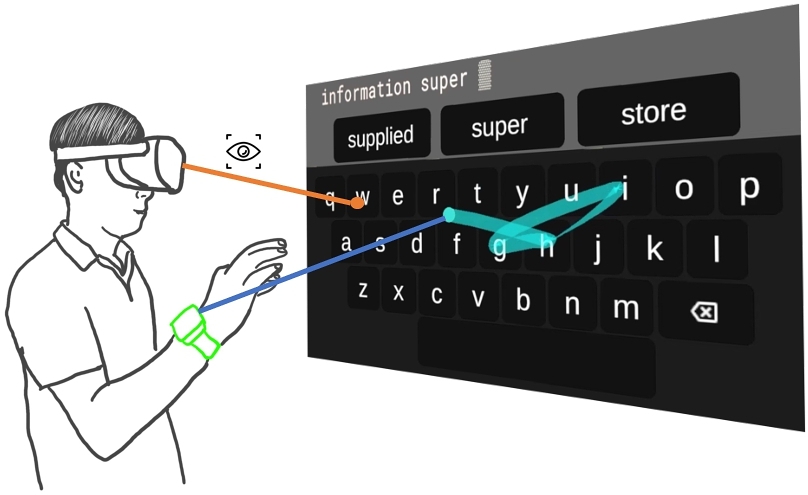HOMER
Hand-centered Object Manipulation Extending Ray-casting (HOMER) is a selection technique described in the article Interaction Techniques for Immersive Virtual Environments: Design, Evaluation, and Application by Doug A. Bowman in 1999. Using ray casting is useful to select an object that is far away, but then moving it or turning it is hard, because moving the hand a little makes the end of the ray move much more. The HOMER technique fixes this issue by using hand-centered manipulation. Once an object is selected with a ray cast, the hand of the user is displaced to the object. Then, the object moves relatively to the movements of the hand, as if it were next to him. This allows precise manipulation for rotation, because the object stays around its original position. Also, the user can move the object by moving his hand, and the displacement is scaled to avoid big movements.
Classifications
Reach: Infinite. The raycast allows to grab an object at any
distance, as long as it is visible by the player.
Cardinality: Single. The user can only select one object, the first
that is hit by the ray.
Refinement: There is no refinement.
World-In Miniature
World-In Miniature consists of making a smaller copy of the world that can fit in the user’s hand. Then he can select objects in it with ease as everything is within its reach. Selection is achieved by reaching into the miniature and grabbing or touching the object of interest. The user can reach objects without moving and can have a global context of the scene.

Classifications
Reach: Limited to the size of the room. However, if the room is too
big, the objects become smaller in the miniature world and can be harder to
grab.
Cardinality: Single. The user can select only one object.
Refinement: There is no refinement.
Eye Gaze Selection
Eye Gaze selection consists of tracking the eyes of the user to select objects. Contrary to a head gaze selection, where the user needs to move his head, this technique only needs the eyes to move, significantly reducing the fatigue and increasing the precision. Eye movements are also faster than head movements. To select an object, the users need to look at it. A highlight can be done to tell what can be selected. Then, a confirmation action needs to be done. It can be a long blink, looking for a long time at the object or a pinch with the hand. The last technique can create fatigue and needs another sensor to track hand movements. The first two techniques do not create fatigue but can create unintentional selections.

Classifications
Reach: Theoretically infinite, but the precision of the eye tracking
device can be limited for far objects.
Cardinality: Single: The user can look at one object at a time
Refinement: As the eyes can have micro movements, a discrete single
step refinement can be done to briefly lock an object when the eyes are not
moving too much.